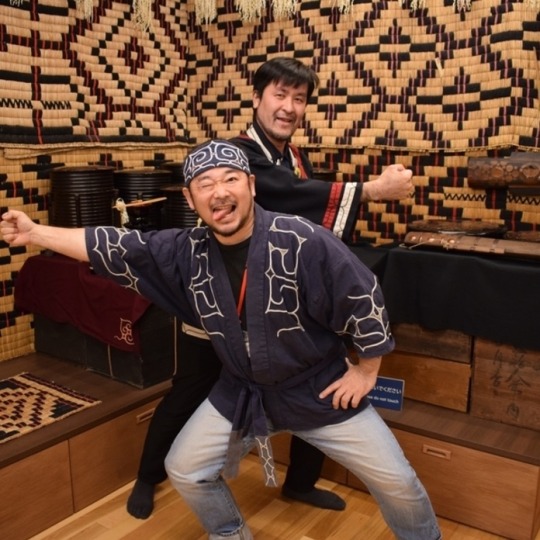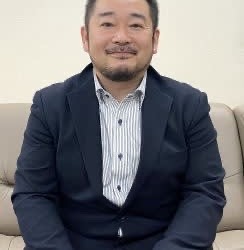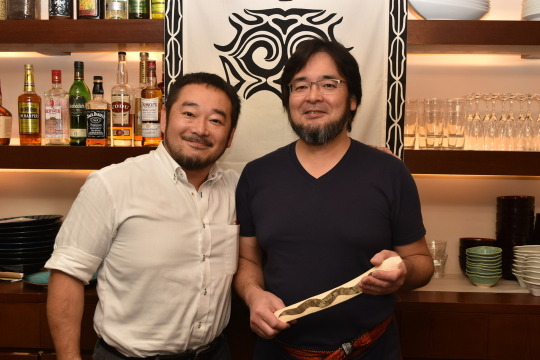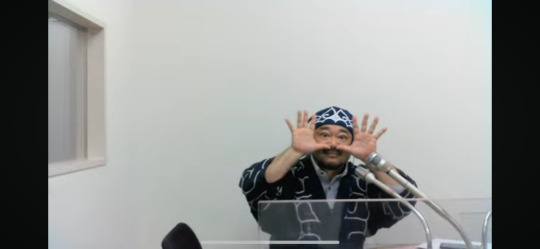#アイヌ
Explore tagged Tumblr posts
Text




The Ainu people are an indigenous ethnic group residing in the northern parts of the Japanese archipelago, including what is today known as Hokkaido and the Tōhoku region of Honshu. Their ancestors date back to the Paleolithic (35,000 – 13,500 BCE) and Jomon periods (13,500 – 400 BCE).
This accordion style album is a copy of Ishūretsuzō (夷酋列像), also known as A Series of Paintings of Ainu Chieftains. It is a series of twelve painted portraits of Ainu elders who helped suppress the Menashi–Kunashiri rebellion in 1789 by siding with the Wajin (ethnic Japanese people, also called Yamato people). The original portraits were completed in 1790 by the Japanese artist Kakizaki Hakyō (1764–1826) and was received by the imperial court in Kyoto in 1791. The album includes a portrait of an elderly woman named Chikiriashikai, the mother of the chieftain Ikotoi, also pictured in the album.
Tan Yi-Ern Samuel, Ph.D. student in the Department of History of Art and Architecture, is looking at this album for his paper in Professor Yukio Lippit’s seminar on East Asian Portraiture, taught with curator of Chinese painting at the Metropolitan Museum of Art, Joseph Scheier-Dolberg. Today, we opened the album to look at it in its standing accordion style. The clothing worn and other accoutrements including animal fur depicted in the portraits show the connections between the Ainu, the Wajin, China, and Russia during that time.
The Ainu people are one of the few ethnic minorities native to the Japanese islands. They have been subjected to forced assimilation and colonization by the Japanese since at least the 18th century or earlier. Their ancestors, referred to as Emishi, were pushed to the northern islands by Wajin since the 9th century. The portraits of Ainu elders in this album reveal how they might have been fashioned in the imagination of the Wajin in the eighteenth and nineteenth centuries.
夷酋列像圖.
Ishūretsuzō zu Title on book: 夷酋圖 : 夷酋十二人圖像 [Japan] : [publisher not identified], [between 1826 and 1830?] Japanese Dates on original paintings: 文政九年 [1826], 十一年[1828] and 十三年[1830] Dates on original paintings: Bunsei 9-nen [1826], 11-nen [1828] and 13-nen [1830]. HOLLIS number: 990147257380203941
#夷酋列像#Ishūretsuzō#Ainu#AinuPortraits#Painting#SpecialCollections#HarvardFineArtsLibrary#Fineartslibrary#Harvard#HarvardLibrary#アイヌ
126 notes
·
View notes
Text

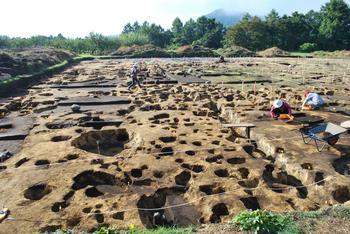
El clan Nanbu tenía un fuerte. ¿Qué es un daimyō? La gama que los samuráis ganaron más poder son los señores feudales, el sitio histórico de shojujitate fue la residencia del clan Nanbu, construido en la orilla norte del río mabuchi en la prefectura de Aomori. Estaban ubicados en el punto estratégico de comunicación. - Sin embargo, el castillo estaba cerca de los caminos oshu kaido y kazunokaido, el lugar estaba limitado por montañas al este-oeste y norte-sur, los 300 a 250 m la dimensión del fuerte era de aproximadamente 90.000 metros cuadrados. Como resultado de la excavación que el arqueólogo llevó a cabo hasta el edificio de pilares del escape más grande de la región de tohoku, se extiende 18 tramos de 36 m de norte a sur de 42 m, la estructura ha sido de dos pisos de altura y los pilares de la puerta de 45 cm la fecha del castillo de 1539 en la era de Teherán. - Cerámica de alta calidad y artefactos culturales honshu Ainu, se han recuperado más de 4000 tipos de cerámica vidriada medieval dentro del sitio, de los cuales siete décimos son guerras vidriadas chinas. - En resumen, la forma en que se puede discernir a partir de los elementos recuperados en los restos de shojujitate datan de la cultura del período Murumachi y Sengoku en Japón. - - En resumen, la forma en que se puede discernir a partir de los elementos recuperados en los restos de shojujitate datan de la cultura del período Murumachi y Sengoku en Japón. - 南部氏には砦がありました。大名とは?武士が勢力を拡大した範囲は領主領であり、青森県の馬渕川北岸に建てられた南部藩の居城であった正寿寺立史跡は交通の要所に位置していました。 しかし、城は奥州街道や鹿角街道に近く、東西南北は山に囲まれた場所でした。 300 から 250 m の砦の寸法は約 90,000 平方メートルでした。 18スパン36m南北42mに及ぶ東北地方最大級の脱獄の柱建造物を考古学者が発掘調査した結果、2階建てで門柱45cmの城郭時代の1539年テヘラン時代。 高品質の陶磁器と本州アイヌの文化的遺物、4000 種類以上の中世の釉薬を使った陶磁器が遺跡内から回収されており、そのうち 10 分の 7 が中国の釉薬を使った陶器です。 手短に言えば、正寿寺立遺跡の出土品から、室町時代と戦国時代の文化が日本に伝わる様子がわかる。 - The Nanbu clan had a fort. What is a daimyo? The range that the samurais won more power are the sir feudal, the shojujitate historic site was the residence of the Nanbu clan, built in the north bank of the mabuchi river in the Aomori prefecture were located in the strategic point of communication. However the castle was near the oshu kaido and Kazunokaido roads, the place was limited by mountains to the east-west and north - south; the 300 to 250 m the dimension of the fort was approximately 90.000 square meters. As a result of excavation the archaeologist conducted to the pillar building of the largest escape of the tohoku region extending 18 spans 36 m north-south spans 42 m, the structure has been two stories tall and gate pillars 45 cm the castle date of 1539 in the Tehran era. High quality ceramics and honshu Ainu cultural artifacts, more than 4000 types of medieval glazed ceramics have been recovered from within the site of which seven tenth are Chinese glazed warres. In short the manner it can be discerned from the items recovered at the shojujitate remains date Murumachi and Sengoku period culture to Japan. ソース写真/source photo: https://www.town.aomori-nanbu.lg.jp/page/1543.html
#正十次立史跡#南部町#青森県#アイヌ文化#アイヌ#日本#日本の歴史#日本の考古学#考古学的遺跡#世界遺産#向かい合う鶴のモチーフ#戦国時代#大名#馬淵川#鹿角街道#ShojujiritsuHistoricSite#NanbuTown#AomoriPrefecture#AinuCulture#Ainu#Japan#JapaneseHistory#JapaneseArcheology#ArchaeologicalRuins#WorldHeritage#FacingCraneMotif#SengokuPeriod#Daimyo#Mabechigawa#Kazunohighway
64 notes
·
View notes
Text
Two cute Ainu grammar points
-po - a suffix added to words to form a diminutive.
menoko メノコ > menokopo メノコポ okkayo オッカヨ > okkayopo オッカヨポ pet ペッ > petpo ペッポ
-popo - a suffix added to names to describe small children.
Emi エミ > Emipopo エミポポ Utunnai ウトゥッナイ > Utunnaipopo ウトゥッナイポポ Bikki ビッキ > Bikkipopo ビッキポポ
26 notes
·
View notes
Text

Ainu storytellers #japan #japandreamscapes #日本 #写真好きな人と繋がりたい #写真 #ファインダー越しの私の世界 #旅行 #旅 #travel #travelphotography #photooftheday #picoftheday #photographylovers #hokkaido #firstnations #ainu #アイヌ #北海道
#japan#japandreamscapes#日本#写真好きな人と繋がりたい#写真#ファインダー越しの私の世界#旅行#旅#travel#travelphotography#photooftheday#picoftheday#photographylovers#hokkaido#firstnations#ainu#アイヌ#���海道
12 notes
·
View notes
Text
函館市北方民族資料館からのアイヌ語彙表
Ainu Vocabulary List from the Hakodate Museum of Northern Peoples
Orders: [Japanese word] + [English translation] + [Ainu written in katakana] + [Ainu written in Roman letters]
Family / Status
人間 Human アイヌ (aynu)
男性 Male オッカヨ (okkayo)
女性 Female メノコ (menoko)
男の子 Boy ヘカチ (hekaci)
女の子 Girl マッカチ (matkaci)
祖父 Grandfather エカシ (ekashi)
祖母 Grandmother フチ (huci)
父 Father ミチ (mici)
母 Mother ハポ (hapo)
兄 Older brother ユポ (yupo)
姉 Older sister サポ (sapo)
弟 Younger brother アク (ak)
妹 Younger sister
・姉から見て From the perspective of the older sister: マタㇰ (matak)
・兄から見て From the perspective of the older brother: マタパ (matapa)
孫 Grandchild ミッポ (mippo)
叔父 Uncle アチャポ (acapo)
叔母 Aunt ウナㇻペ (unarpe)
夫婦 A married couple ウムレㇰ (umurek)
夫 Husband ホク (hoku)
妻 Wife マッ (mat)
紳士 Gentleman シパ (nisipa)
淑女 Lady カッケマッ (katkemat)
Body
体 Body ネトパケ (netopake)
顔 Face サパ (sapa)
髪 Hair オトㇷ゚ (otop)
額 Eyebrows キプトゥル (kiputuru)
耳 Ear キサラ (kisara)
目 Eyes シㇰ (sik)
鼻 Nose エトゥ (etu)
口 Mouth パㇻ (par)
歯 Teeth ニマク (nimaku)
眉 Cheek ラル (raru)
頬 Eyebrows ノタカㇺ (notakam)
頸・喉 Neck and throat レクッ (rekut)
肩 Shoulders (tap)
背中 Back セトゥㇽ (setur)
腰 Waist イッケウ (ikkew)
手 Hand テㇰ (tek)
指 Finger アッケペッ (askepet)
腹 Belly/stomach ホン (hon)
へそ Bellybutton ハンク (hanku)
尻 Buttocks オソㇿ (osor)
足 Legs チキㇼ (chikir)
Places
国 Country モシㇼ (moshir)
村 Village コタン (kotan)
山 Mountains ヌプリ (nupuri)
川 Rivers ペッ (pet)
海 Sea アトゥイ (atuy)
湖 Lake ト (to)
木 Wood ニ (ni)
森 Forest ニタイ (nitay)
太陽 Sun チュプ (cup)
月 Moon クンネチュプ (kunnecup)
空 Sky ニㇱ (nis)
星 Stars ノチウ (nociw)
春 Spring パイカㇻ (paykar)
夏 Summer サㇰ (sak)
秋 Autumn チュㇰ (chuk)
冬 Winter マタ (mata)
Time
昨日 Yesterday ヌマン (numan)
今日 Today タント (tanto)
明日 Tomorrow ニサッタ (nisatta)
Colours
白 White レタㇻ (retar)
赤 Red フレ (hure)
黒 Black クンネ (kunne)
緑 Green シウニン (shiwnin)
青 Blue シウニンノ (shiwninno)
金 Gold コンカネ (konne)
銀 Silver シロカネ (shirokane)
Faith
神 gods カムイ (kamuy)
祈り・祈祷 Prayer カムイノミ (kamuynomi)
*Anything with a plural stuck to the end, know that it can be singular, and any singular can also be plural. The information is written down in Japanese in which this distinction is not made.
10 notes
·
View notes
Text
札幌アイヌ協会激震「公費私物化疑惑」を現職理事が集団告発|NEWSポストセブン https://www.news-postseven.com/archives/20200831_1591078.html
#NEWSポストセブン
37 notes
·
View notes
Text
イタとか
去年はなんだかいろんなことにチャレンジしてみたくて、教室の人に教えてもらったアイヌの木彫りの講座に参加するために、北海道アイヌ協会に少しの間だけですが通いました。 全10回くらいの講座だったと思いますが、全部は行けなく半分くらいの参加。 北海道アイヌ協会��かでる2.7の中にありますが、かでるではかなりお久しぶりのとてもお世話になった会社員時代の先輩との再会もあったりと、楽しいひとときを過ごすことができました。 肝心の木彫りの方ですが、これは靴作りに活かせるかもという技術があったり、使い慣れた革用の包丁を使ったり、ベテランの講師との個別のお話は手仕事をやる上で参考になることがあったりと、外へ出てどこかに飛び込んでみることの良さを感じました。 実際に彫ってみるとこれが難しい…、素材の良し悪しがあるのはもちろんのこと、木目のイタズラが。 わかっているはずなのに、そんなに時間も取れないものだから失敗しまくり。 そんな中で先生の手捌きの素晴らしさ。思わず声を上げてしまいます。 先日、講座の成果を展示する催しが白老であり、とてもそんな場所で見せられるようなものではありませんでしたが、せっかくの機会なので一緒に展示していただきました。 彫ったままの状態でしばらく置いていたのですが、展示の機会を前に漆を塗り塗りしました。なぜかちょうど漆があるのです、うちには。
少しだけ写真。



練習

なんだかよくわからないですが…
2 notes
·
View notes
Text

Albert the Lemur Catta, in Ainu vibe
#sailverse horizon#my ocs#original character#ring tailed lemur#Ainu#アイヌ#ethnicfashion#ethnicwear#ethnic#民族衣装#albert the lemur catta
5 notes
·
View notes
Text
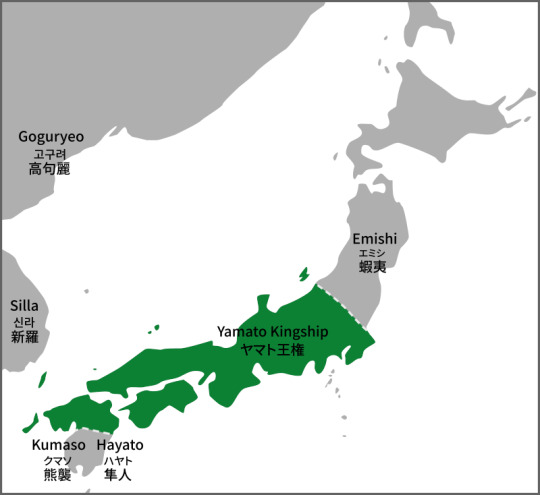
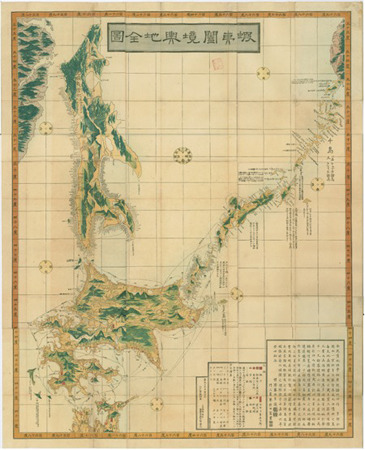
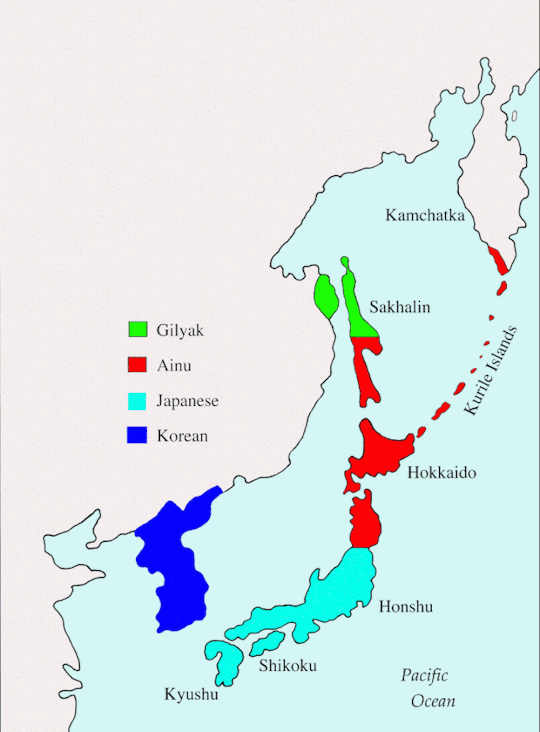
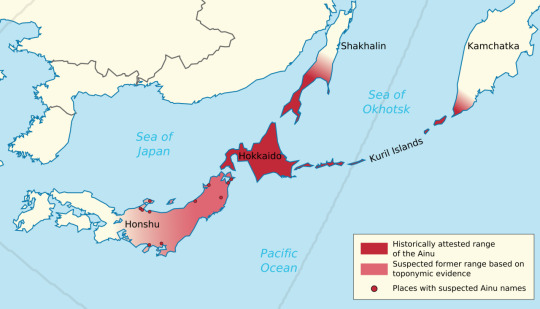
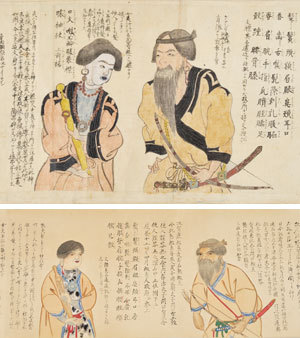
Capítulo 1: Introducción a los Emishi. Sean bienvenidos amantes del mundo japonés a una nueva publicación, en esta ocasión vamos a hablar sobre los emishi dicho esto pónganse cómodos que empezamos. - Para empezar, el término emishi hace referencia a todas las tribus y pueblos que vivían y que todavía viven al norte de Japón es decir la mitad norte de Tohoku, incluida hokkaido a este pueblo se le denominaba y se le denomina todavía a día de hoy Ainu, considerados los primeros pobladores del archipiélago a lo largo del siglo XVI hubo una serie de campañas militares para controlar dicho territorio aunque ya en el siglo VII siglo VIII después de Cristo durante el apogeo del clan yamato crearon una serie de fortalezas al norte para mantenerlos a raya. De hecho eran denominados bárbaros del norte que además se revelarán en más de una ocasión bajo el dominio japonés sin resultado alguno, actualmente se les da un reconocimiento a esta cultura, que en el pasado no lo tuvieron, como por ejemplo hay un museo dedicado a ellos y a su cultura. - Espero que os haya gustado y nos vemos en próximas publicaciones que pasen una buena semana. - 第 1 章: 蝦夷の紹介。 日本世界を愛する皆さん、新しい出版物にようこそ。今回は蝦夷について話します。とはいえ、気を楽にして始めましょう。 - まず、蝦夷という用語は、日本の北、つまり北海道を含む東北の北半分に住んでいた、そして今も住んでいるすべての部族と民族を指し、この民族は現在もアイヌと呼ばれていると考えられています。 16 世紀を通じてこの列島に最初に定住した人々は、その領土を支配するために一連の軍事作戦を行ったが、すでに 7 世紀から 8 世紀にはヤマト氏の全盛期に、彼らは北に一連の要塞を築き、領土を維持していた。湾。実際、彼らは北の野蛮人と呼ばれていましたが、日本の統治下でも何の成果も得られずに何度も姿を現しましたが、現在では、この文化は、例えば、そこでは過去にはなかった認識を与えられています。は彼らとその文化に特化した博物館です。 - 気に入っていただければ幸いです。今後の投稿でお会いしましょう。良い一週間をお過ごしください。 - Chapter 1: Introduction to the Emishi. Welcome lovers of the Japanese world to a new publication, this time we are going to talk about the emishi, that being said, make yourself comfortable and let's get started. - To begin with, the term Emishi refers to all the tribes and peoples who lived and still live in the north of Japan, that is, the northern half of Tohoku, including Hokkaido. This people was called and is still called Ainu today. , considered the first settlers of the archipelago throughout the 16th century there were a series of military campaigns to control said territory although already in the 7th century 8th century AD during the heyday of the Yamato clan they created a series of fortresses to the north to keep them at bay. stripe. In fact, they were called barbarians of the north who also revealed themselves on more than one occasion under Japanese rule without any result. Currently, this culture is given recognition, which in the past they did not have, such as, for example, there is a museum dedicated to them and their culture. - I hope you liked it and see you in future posts, have a good week.
#japan#culture#history#archaeology#photography#Ainu#Hokkaido#Emishi#heianperiod#NaraPeriod#unesco#anime#日本#文化#歴史#考古学#写真#アイヌ#北海道#蝦夷#平安時代#奈良時代#ユネスコ#アニメ#maps#地図#地理#geography#Tohoku#東北
60 notes
·
View notes
Text
Ainu vocab - start of 2nd year, 1.2.
I have been wanting to make a series about learning Ainu so people can see my progress! Maybe you can even follow my progress and learn the same words along the way!
If you have not learned Ainu yet, start now with my "already known words" list; if you have been learning for 1+ years, learn both lists!
NEW WORDS
hontomo - in the middle apapok - near door kenas - low place near river earkinne - very cikuni - wood ora - because nina - to collect firewood asinuma - self yaymonikor - busy sinean - one day sike - carry on back puniakus - lift ehopuni - raise, rise koskoso - weigh by hand kosne - light (weight) monaa - to sit ehopuni - return, resume ayne - so situri - stretch
ALREADY KNOWN WORDS
tane - today nispa - sir, leader ne hine - was, and kotan - town poro - big pirka - good sat - dry utari - people makanak - how, somehow eun - to somo ki - not kusu - because oro ta - (to) there arpa - to go (plural) wa - and eramiskari - to not know korka - because sini - to rest sorekus - all that poronno - a lot hopuni - to get up eaykap - cannot kor - to have
Dialects used here: Ishikari, Saru
#langblr#language#learning#studyblr#ainu#endangered languages#ainu itak#word list#learn with me#アイヌ語#アイヌ
10 notes
·
View notes
Text

Ainu dance & crafts in our latest newsletter! #japan #japandreamscapes #日本 #写真好きな人と繋がりたい #写真 #ファインダー越しの私の世界 #旅行 #旅 #travel #travelphotography #photooftheday #picoftheday #photo #photographylovers #ainu #firstnations #hokkaido #art #アイヌ #北海道 #アート #職人
#japan#japandreamscapes#日本#写真好きな人と繋がりたい#写真#ファインダー越しの私の世界#旅行#旅#travel#travelphotography#photooftheday#picoftheday#photo#photographylovers#ainu#firstnations#hokkaido#art#アイヌ#北海道#アート#職人
13 notes
·
View notes
Text
Short documentary of Chiri Yukie
Told in Japanese
youtube
You can use third party translators, or YouTube generative one to understand it if you don't know Japanese.
I will probably compile a list of points when I have the time, so you can just wait for my list as well, if one would want so.
9 notes
·
View notes

